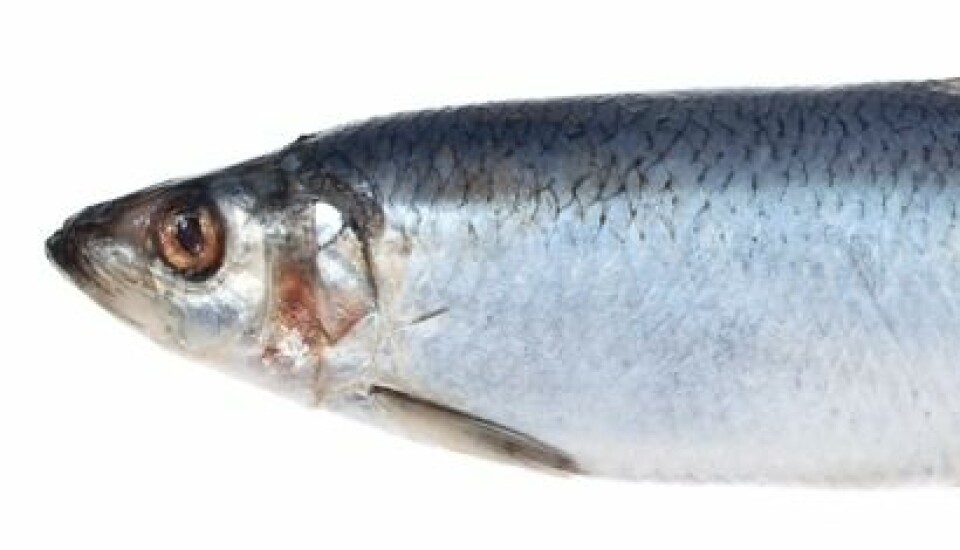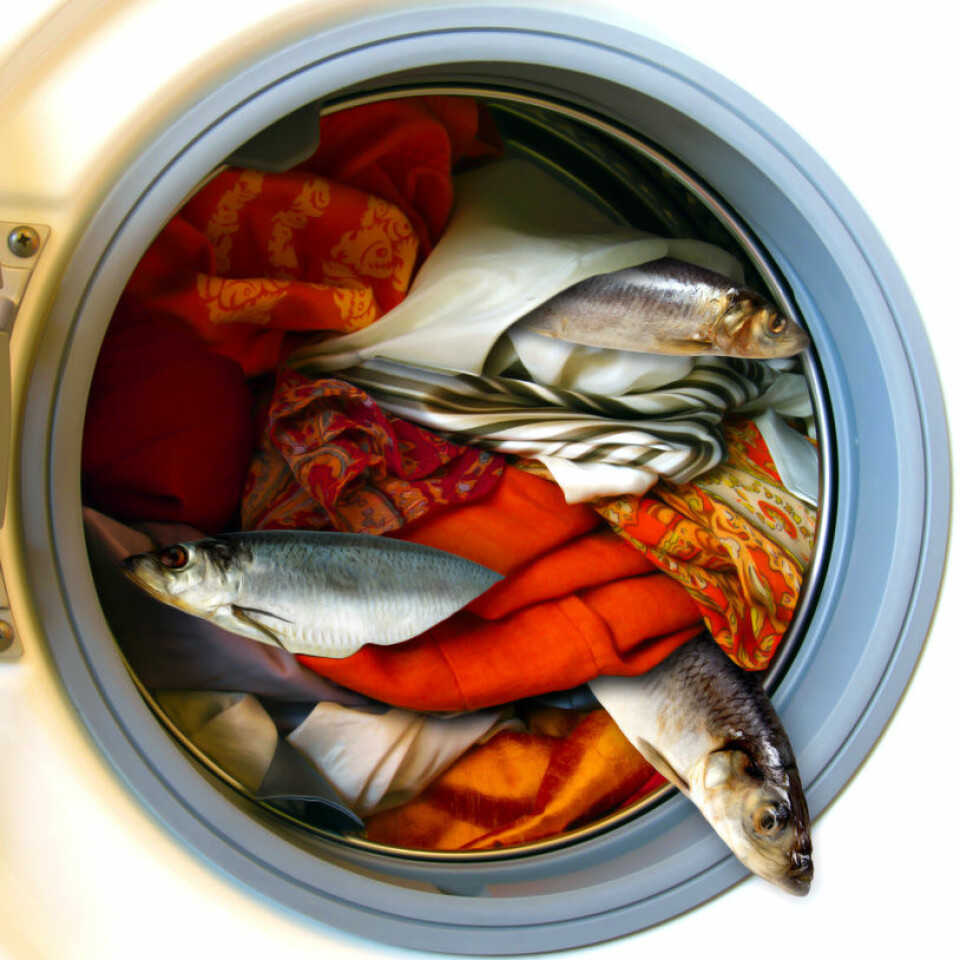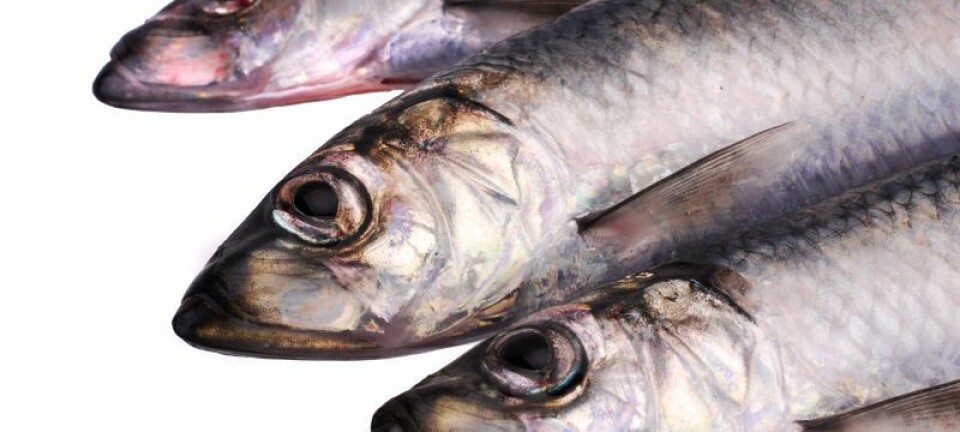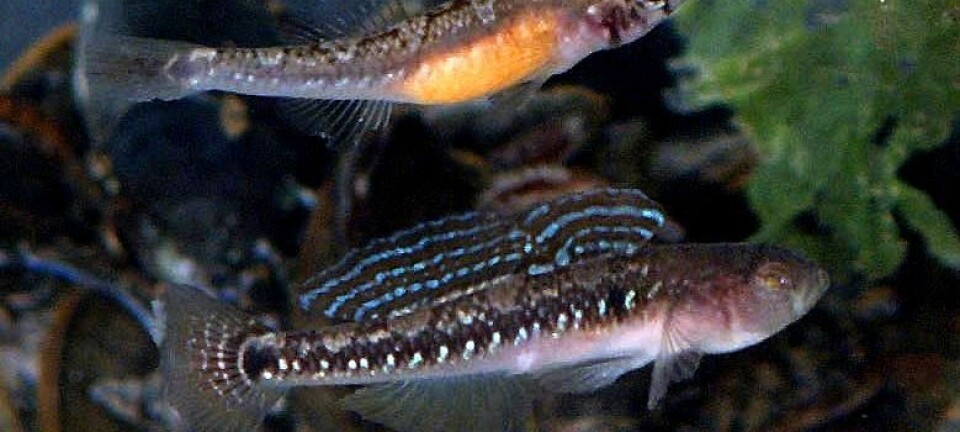
Prospecting herring waste
The messy leftovers from herring processing could be put to better use. Enzymes from the fish parts can soon wind up in detergents or even in juice.
Denne artikkelen er over ti år gammel og kan inneholde utdatert informasjon.
Only 60 percent of the herring caught in Norway ends up being fried, pickled, etc. From a total catch of 900,000 tonnes of herring, about 360,000 tonnes of waste is left over once they’ve been fileted.
Most of this is skin, bones and guts. This residue is currently converted into feed for farmed fish and other animals. But such remains don’t fetch much of a price, around €0.36 per kilo – whereas fish factories get up to €2.for the filets.
This is why Diana Lindberg is conducting research on alternative ways to utilise the leftovers from the herring industry.
“We’re looking for enzymes in the herring residue and have already found 25 of them that look promising,” explains Lindberg. She works with herring in a research group at the Marine Biotechnology department of the food research institute Nofima.
An enzyme is a protein that catalyses a biological reaction and it can be used in foods, medicines and household products. These useful substances can be produced by extraction from animals or plants or by getting bacteria or fungi to make them for us.
The enzyme hunt
Enzymes from livestock such as cattle or pigs as well as from poultry farms are already being put to industrial use. Trout, salmon and cod also contain enzymes that make foods stay fresh longer, wash stains out of our clothes and improve our health.
“Competition is stiff among research groups striving to extract fish enzymes for industrial use. Herring has lagged behind here,” she says.
This is something the Swedish post doc, who’s worked at Nofima for nearly two years, is hoping to rectify.
“Herring is a major catch that hasn’t been researched sufficiently. I think maybe it’s just too ordinary. But that’s why it’s exciting to be bioprospecting herring.”
Bioprospecting is an umbrella term for researching biochemical and genetic resources in plant and animal material.
“Laboratory bacteria are used a lot today in enzyme production. But fish wastes are a great alternative for the food industry, for instance where obtaining enzymes from bacteria can sound a little dodgy,” says the researcher.
Useful at low temperatures
Herring is a fatty fish. Fats are the first thing to be removed in the stages leading up to useful enzymes.
“We take everything that is water soluble out in the various stages of purification, depending on which enzymes we're prospecting for.”
Some enzymes are suitable for baking because they decompose the cellulose in starch so that yeasts are more effective. Other enzymes are used in the treating leather – to make hides nice and soft. Still others can aid in the making of cheese or make juices stay fresh longer.
Enzymes can also be an environmentally friendly alternative to chemicals in production of pharmaceutical products and biofuels.

During diverse phases in purifying fish waste, Lindberg reasons her way to finding these invisible proteins. Different cleansing methods yield different enzymes.
“We’ve been fortunate in finding as many as 25 enzymes in our experiments,” says Lindberg.
“We’re concentrating now on four of them which we selected for further experimentation.”
Now the researcher wants to find out the characteristics of these four herring enzymes and how they hold up against enzymes that are already on the market.
“Herring swim in cold waters and we’ve already discovered that many of the selected enzymes work well in cold temperatures. This can make them useful in detergents.”
Clothes last longer when they are washed in colder water. A possible use for herring enzymes would be in laundry powders that are as effective as other products but which work in cooler water.
Pharmaceuticals
A side project run by the herring team at Nofima involves prospecting for enzyme inhibitors. These can be used in medicines to slow down the development of diseases such as Alzheimer’s and hepatitis C.
Lindberg says a study conducted in collaboration with Professor Helena Danielson’s group at the University of Uppsala, Sweden, concluded that inhibitors from herring can be as effective as others on the market.
Herring has a way to go
Lindberg’s project group collaborates with the fisheries firm Nergård AS, an enterprise in North Norway that filets and packages herring.
“A goal of our research is to add value to the waste from herring by discovering new uses for it.”
The four selected enzymes are now in a water solution. It will be some time before they can be launched on the market in competition with enzymes made from cows or chickens. But Lindberg has hitched her hopes to enzymes from herring. Norwegian fishermen refer to herring as “the silver of the sea”. The plan is to turn it into gold.
————————————————-
Read the Norwegian version of this article at forskning.no
Translated by: Glenn Ostling

































